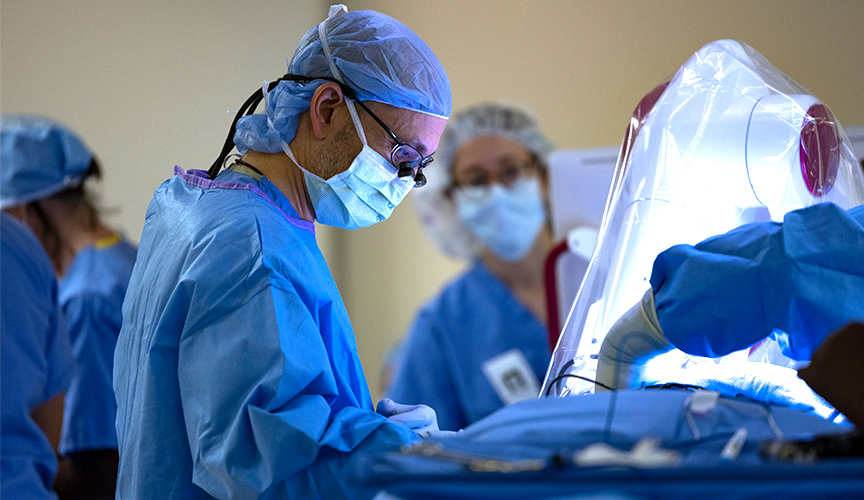Once the evaluation and diagnosis process is complete, your family will be presented with a care plan from our pediatric epilepsy experts. Treatments may include medications, a special diet or surgery.
Epilepsy conditions we treat:
- Generalized epilepsy
- Absence seizures
- Focal or partial seizures
- Dravet syndrome
- Infantile spasms
- Lennox-Gestaut syndrome
- Juvenile myoclonic epilepsy (JME)
- Intractable epilepsy
- And many more
Medications
There are many types of medications which can be used to treat seizures and epilepsy. In addition, patients who have not responded to the typically prescribed medications and are not candidates for epilepsy surgery may be given the opportunity to be treated with new study medication.
Le Bonheur physicians have experience in the development of every new drug for epilepsy introduced into the US in the last 30 years. We continue to work with the FDA and drug companies to develop new treatments.
Ketogenic diet
This is a special diet that may be an option for children who do not tolerate medications or whose seizures are not being well controlled with medication alone. The Ketogenic diet is a very strict diet high in fats and low in carbohydrates and protein. Le Bonheur has specially-trained dieticians to help your family understand and implement this diet.

Epilepsy surgery options
Surgery for epilepsy is performed by our specialized neurosurgical team. The operation may remove the part of the brain where the seizures occur, or the surgery may stop the spread of electrical currents through the brain.

Our surgery options include:
- Resective surgery: The part of the brain that causes seizures is removed.
- Corpus callosotomy: The nerve fibers between the two sides of the brain are cut. This interrupts the spread of seizures from one side of the brain to the other.
- Hemispherectomy: One side of the brain is removed. This surgery is performed only if seizures have not responded to medications and in special circumstances.
- Vagus nerve stimulation: A small device, called a vagus nerve stimulator (VNS), is implanted beneath the skin of the chest and sends impulses to the brain to prevent or stop seizures.
- Responsive neurostimulation (RNS): RNS is a new device therapy used to treat seizures in adults who have not had their seizures controlled with medication and are not candidates for epilepsy surgery. This is being used in a limited basis in children, primarily over 10 years old, with poorly controlled seizures. The device is implanted in the skull with electrodes placed on the surface of the brain. The location of these electrodes is based on their evaluation in the Epilepsy Monitoring Unit and is individualized for each patient.
- Laser Interstitial Thermal Therapy (LiTT): LiTT is a minimally-invasive procedure used to treat certain types of brain tumors as well as areas of the brain that are responsible for generating seizures in patients with epilepsy. A neurosurgeon may recommend LiTT when it offers a safer, more effective or less invasive alternative to traditional open surgery — particularly for deep or hard-to-reach areas of the brain. During the procedure, a small incision is made in the scalp, and a thin laser probe is inserted through a tiny opening in the skull. Using real-time MRI guidance, the neurosurgeon carefully navigates the probe to the precise target. Once in place, the laser delivers focused heat to destroy the abnormal tissue, while preserving the surrounding healthy brain. Because LiTT avoids a large surgical opening, most patients experience less pain, shorter hospital stays and quicker recoveries compared to conventional brain surgery.
Facebook Live
Neuroscience Institute Co-Director James Wheless, MD, answers questions about the various treatment options for epilepsy.




